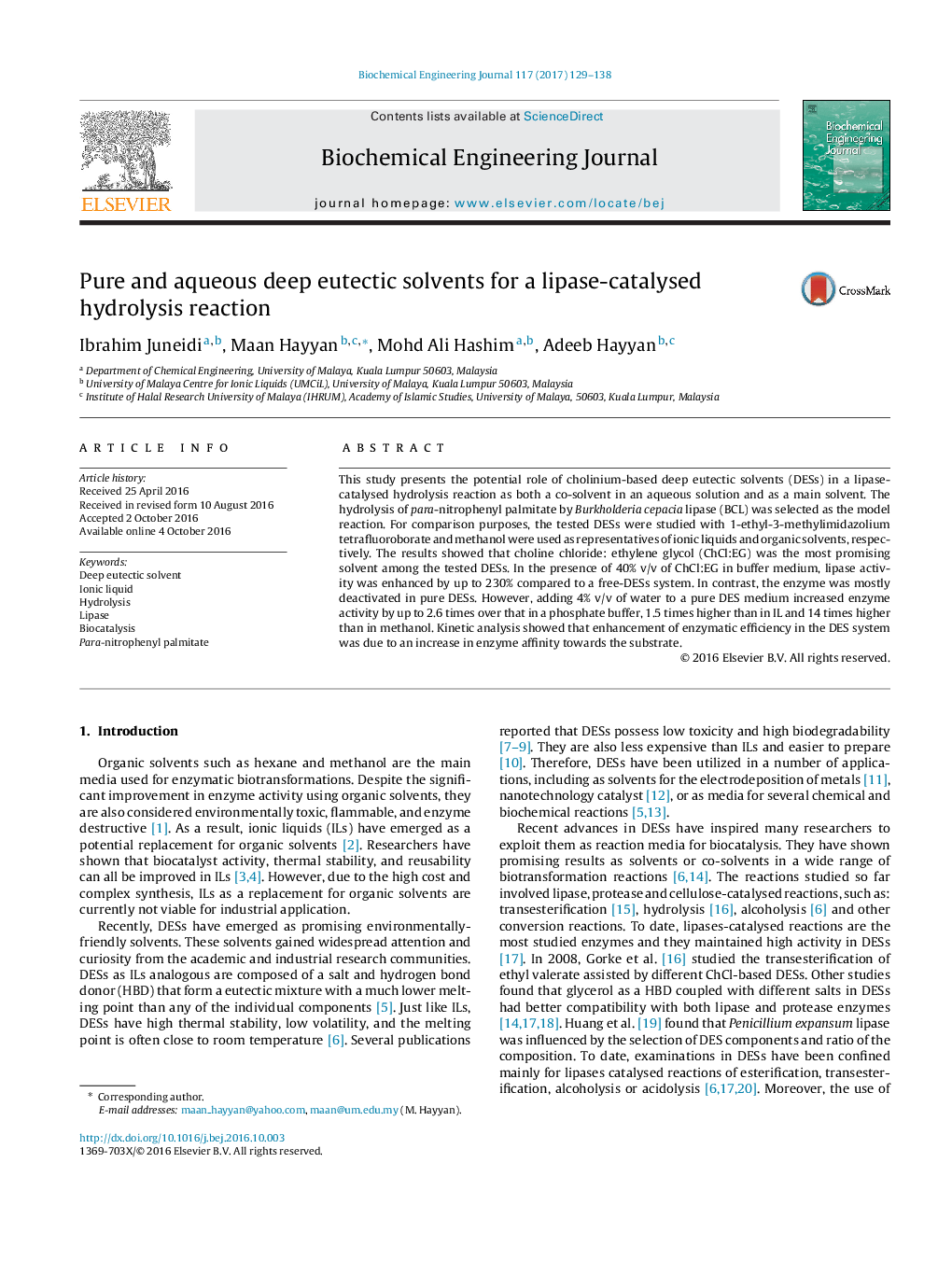| Article ID | Journal | Published Year | Pages | File Type |
|---|---|---|---|---|
| 4752200 | Biochemical Engineering Journal | 2017 | 10 Pages |
â¢The enzyme activity was enhanced significantly in the DES systems.â¢Lipase maintained more than 50% of its activity after 7 days of incubation in DESs.â¢The enzyme was deactivated in pure DESs system.â¢The addition of water to pure DESs promotes considerably the hydrolysis yield.â¢Pure ChCl:EG with 4% v/v of water was the best DESs system for lipase activation.
This study presents the potential role of cholinium-based deep eutectic solvents (DESs) in a lipase-catalysed hydrolysis reaction as both a co-solvent in an aqueous solution and as a main solvent. The hydrolysis of para-nitrophenyl palmitate by Burkholderia cepacia lipase (BCL) was selected as the model reaction. For comparison purposes, the tested DESs were studied with 1-ethyl-3-methylimidazolium tetrafluoroborate and methanol were used as representatives of ionic liquids and organic solvents, respectively. The results showed that choline chloride: ethylene glycol (ChCl:EG) was the most promising solvent among the tested DESs. In the presence of 40% v/v of ChCl:EG in buffer medium, lipase activity was enhanced by up to 230% compared to a free-DESs system. In contrast, the enzyme was mostly deactivated in pure DESs. However, adding 4% v/v of water to a pure DES medium increased enzyme activity by up to 2.6 times over that in a phosphate buffer, 1.5 times higher than in IL and 14 times higher than in methanol. Kinetic analysis showed that enhancement of enzymatic efficiency in the DES system was due to an increase in enzyme affinity towards the substrate.
